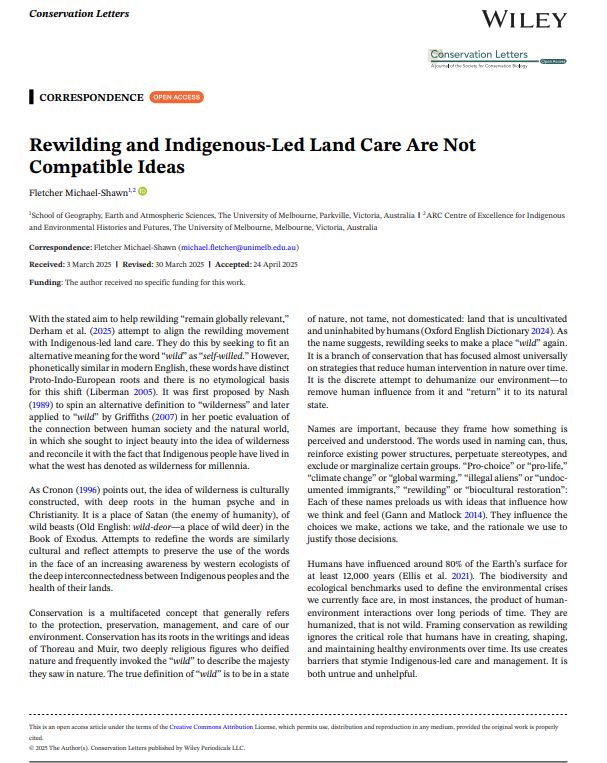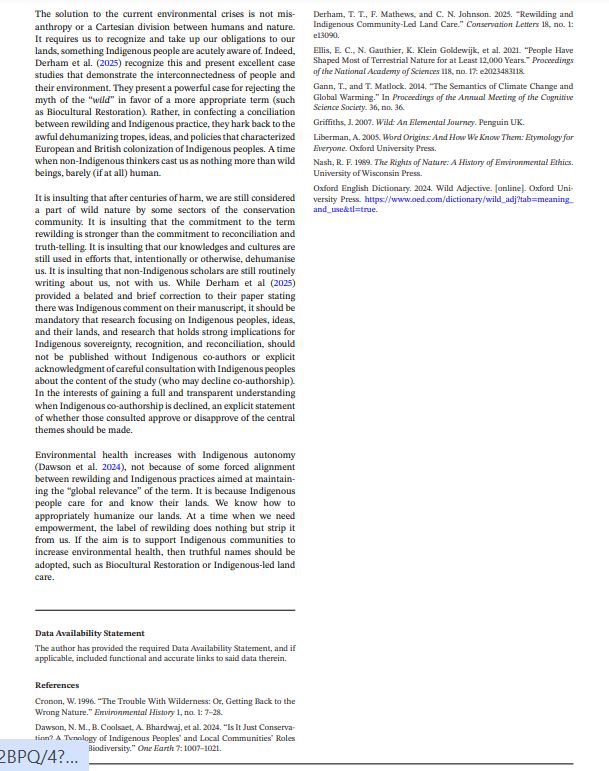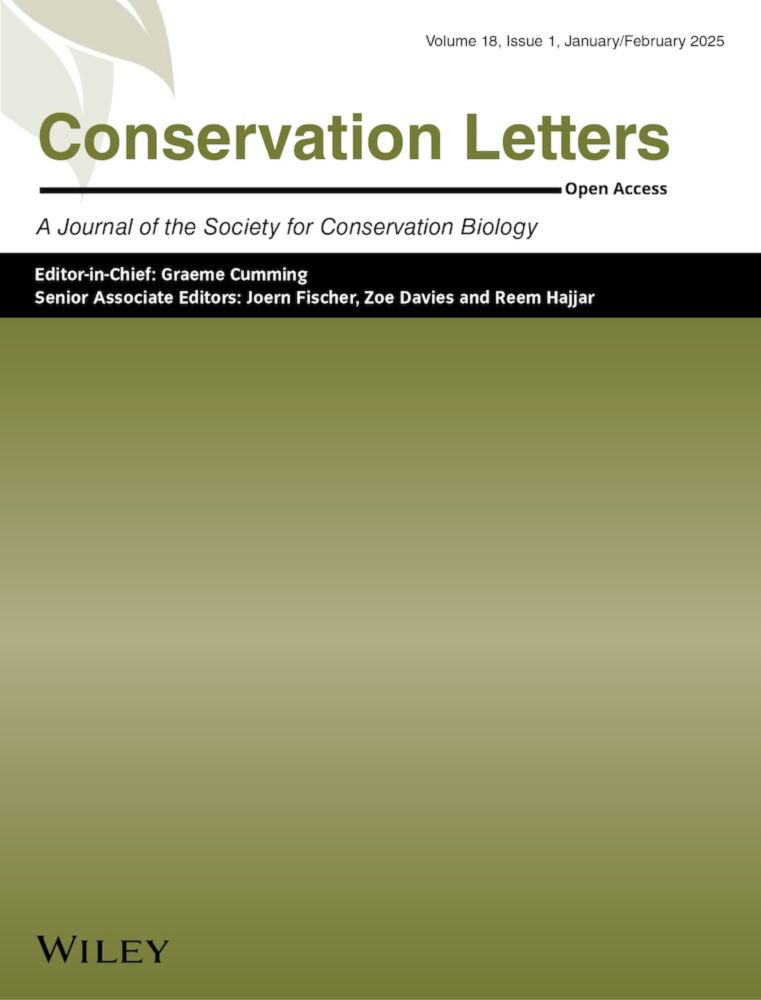Conservation Letters
@consletters.bsky.social
4.9K followers
1.2K following
26 posts
We present open access cutting-edge advances in the science & practice of conserving biological diversity & promoting human well-being. A journal of the Society for Conservation Biology.
https://conbio.onlinelibrary.wiley.com/journal/1755263x
Posts
Media
Videos
Starter Packs
Reposted by Conservation Letters
Reposted by Conservation Letters
Ana Benítez
@anabenlop.bsky.social
· Aug 30
Reposted by Conservation Letters
Reposted by Conservation Letters
Reposted by Conservation Letters
Reposted by Conservation Letters
Reposted by Conservation Letters
Bronwen Hunter
@bronwenhunter.bsky.social
· Jun 20

Resolving Uncertainties in the Legality of Wildlife Trade to Support Better Outcomes for Wildlife and People
Wildlife use and trade support the livelihoods of millions of people worldwide but also threaten thousands of species. Legal instruments, when effectively designed and implemented, can help regulate ...
conbio.onlinelibrary.wiley.com
Reposted by Conservation Letters
Reposted by Conservation Letters
Reposted by Conservation Letters
Reposted by Conservation Letters
Reposted by Conservation Letters






















